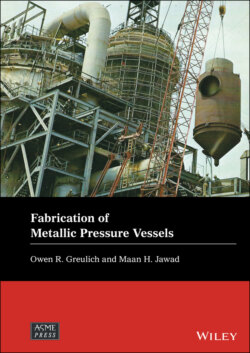Читать книгу Fabrication of Metallic Pressure Vessels - Maan H. Jawad - Страница 32
1.5 Units and Abbreviations
ОглавлениеThis section describes the unit conventions used in this book. Consistency of units is important in communicating technical data. While throughout the engineering field there is generally good comprehension of units, conversions, and their use, various industries and companies have their own conventions. This can result in confusion, mistakes, and accidents. An example is when NASA lost a 125‐million‐dollar Mars Climate Orbiter when the navigation team at JPL used the customary NASA metric units in its calculations of acceleration readings while Lockheed Martin that built the spacecraft provided the vital acceleration data in the English units. And as the Los Angeles Times put it, “In a sense, the spacecraft was lost in translation.”
Rates will use abbreviations, not followed by a period, and a slash rather than “per.” Example: “inches per minute” will be written as “in./min”, and in metric “mm/min.”
While in machining the cutting speed is generally referred to as “surface feet per minute,” for consistency with other sections this will be written as “ft/min” with no periods at the ends of the abbreviations.
“Micro” will be represented by the lowercase Greek letter mu, written as μ.
English units will be used, followed by the metric equivalent. Dimensions will generally be rounded when converted, and will show no more than three significant figures. For example, “6 in.” becomes “150 mm.” This convention will be followed unless something is clearly intended as an exact dimension or for nominal sizes that are clearly not rounded measurements of the specified dimension. Thus, 6 in. plate is written as 150 mm, and 6 in. pipe is written as DN 150. 3/4 in. plate is written as 19 mm plate.
Appendix A provides a list of abbreviations and conversions commonly used in the pressure vessel industry.
